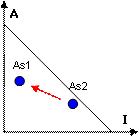First steps in Workflow Foundation
I have started to play with Windows Workflow Foundation (WF) a few days ago. So far it seems very interesting, shipping with handy pre-build activities, persistence and tracking services, prity designers for visual studio, the capability of hosting these designers anywhere else…web services interaction, etc. Promising.
I just want to take down some notes here so I don't forget what I've learned.
Some Material
- MS E-Learning course
- Hands on Lab
- WF Documentation (Programming model, samples, tools)
- Windows Workflow Foundation (WF): Set of components, tools, and a designer that developers can use to create and implement workflows in .NET Framework applications. It is part of the Microsoft .NET Framework version 3.0.
- Workflow: a set of activities that are stored as a model that describes a real-world process. A workflow is designed by laying out activities.
- Activity: A step in a workflow. The unit of execution, re-use and composition for a workflow.
- Types of workflows (Here is a post about how to decide which type to use):
- Sequential: Consists of activities that execute in a predefined order. Has a clear direction of flow from top to bottom, although it can include loops, conditional tests, and other flow-control structures.
- State-Machine: Consists of states and transitions that change a workflow instance from one state to another. Although there is an initial state and a final state, the states have no fixed order, and an instance can move through the workflow in one of many paths.
- Data-Driven: Is usually a sequential workflow that contains constrained activity groups and policies. In a data-driven or rules-based workflow, rules that check external data determine the path of a workflow instance. The constrained activities check rules to determine the activities that can occur.
The framework component model
The WF framework consists on 3 assemblies, containing the following namespaces:
- System.Workflow.Activities
- System.Workflow.Activities: Defines activities that can be added to workflows to create and run an executable representation of a work process.
- System.Workflow.Activities.Configuration: Provides classes that represent sections of the configuration file.
- System.Workflow.Activities.Rules: Contains a set of classes that define the conditions and actions that form a rule.
- System.Workflow.Activities.Rules.Design: Contains a set of classes that manage the Rule Set Editor and the Rule Condition Editor dialog boxes.
- System.Workflow.ComponentModel
- System.Workflow.ComponentModel: Provides the base classes, interfaces, and core modeling constructs that are used to create activities and workflows.
- System.Workflow.ComponentModel.Compiler: Provides infrastructure for validating and compiling activities and workflows.
- System.Workflow.ComponentModel.Design: Contains classes that developers can use to build custom design-time behavior for workflows and activities and user interfaces for configuring workflows and activities at design time. The design-time environment provides systems that enable developers to arrange workflows and activities and configure their properties. The classes and interfaces defined within this namespace can be used to build design-time behavior for activities and workflows, access design-time services, and implement customized design-time configuration interfaces. It includes the TypeBrowserEditor, a cool feature that can be reused.
- System.Workflow.ComponentModel.Serialization: Provides the infrastructure for managing the serialization of activities and workflows to and from extensible Application Markup Language (XAML) and CodeDOM.
- System.Workflow.Runtime
- System.Workflow.Runtime: Classes and interfaces that control the workflow runtime engine and the execution of a workflow instance.
- System.Workflow.Runtime.Configuration: Classes for configuring the workflow runtime engine.
- System.Workflow.Runtime.DebugEngine: Classes and interfaces for use in debugging workflow instances.
- System.Workflow.Runtime.Hosting: Classes that are related to services provided to the workflow runtime engine by the host application.
- System.Workflow.Runtime.Tracking: Classes and an interface related to tracking services.


